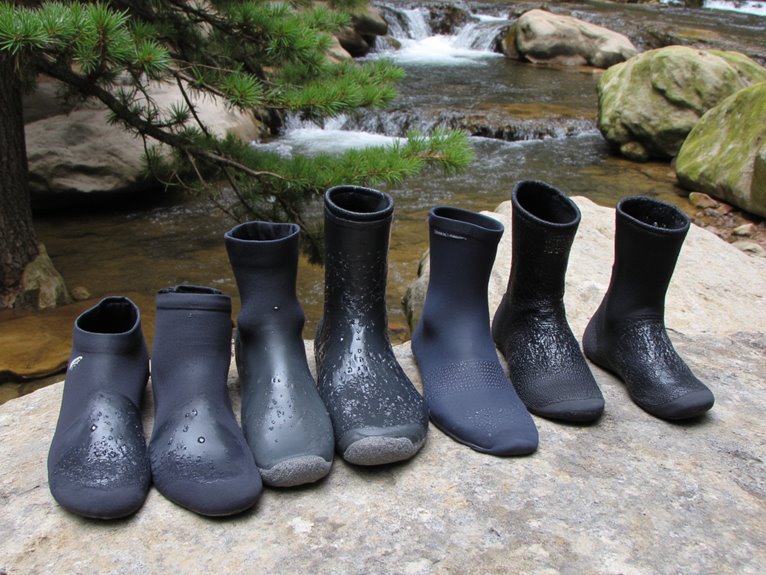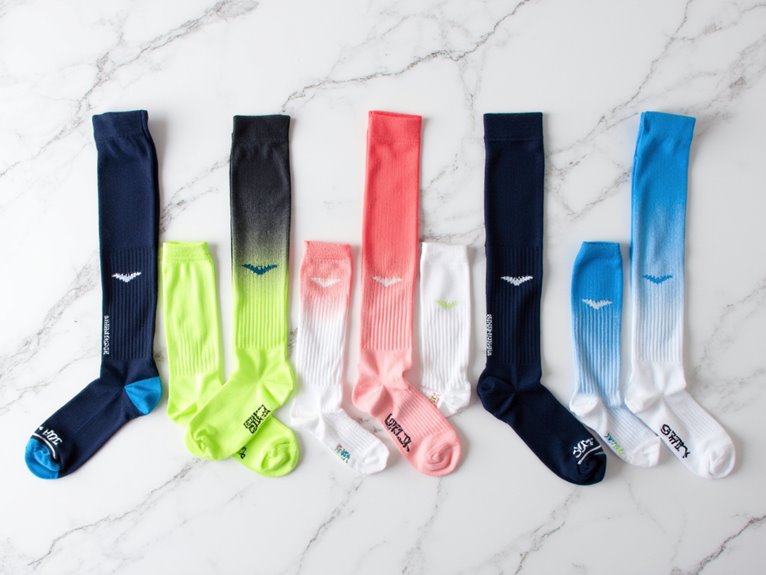Are Swags Warm in Winter?
The warmth and comfort of a swag in winter hiking and camping excursions hinge on its thermal insulation capability, which is determined by its thermal resistance or tog rating. A higher thermal rating indicates better insulation, enabling the swag to retain more body heat in cold winter conditions. The material selection and construction methodology also play a vital role in maintaining a comfortable sleeping temperature. By understanding the thermal ratings, materials, and construction of a swag, campers can make informed decisions when choosing the right gear for their winter adventures, and uncover the secrets to a warm and comfortable night's sleep under the stars.
We are supported by our audience. When you purchase through links on our site, we may earn an affiliate commission, at no extra cost for you. Learn more. Last update on 2nd January 2026 / Images from Amazon Product Advertising API.
Insulation and Thermal Ratings
Thermal insulation, a pivotal component of swag design, plays a paramount role in retaining body heat, with thermal ratings serving as a key indicator of a swag's warmth in winter. A swag's thermal insulation capability is typically measured by its thermal resistance, expressed in units of tog or R-value. Higher thermal ratings indicate better insulation, enabling the swag to retain more body heat. In cold winter conditions, a swag with a higher thermal rating can make a significant difference in maintaining a comfortable sleeping temperature. When selecting a swag for winter camping, it is crucial to examine the thermal rating to guarantee a warm and comfortable sleeping experience. A swag with a suitable thermal rating can be the difference between a restful night's sleep and a cold, uncomfortable one.
Swag Materials and Construction
A swag's material selection and construction methodology substantially influence its overall thermal performance, as the type and quality of materials used can either augment or compromise the swag's ability to retain body heat in cold winter conditions. For instance, swags constructed with high-quality, breathable fabrics such as ripstop nylon or polyester can facilitate airflow and moisture wicking, thereby reducing condensation and enhancing thermal efficiency. In addition, the insulation material used, such as down, synthetic, or hybrid fill, plays a vital role in trapping warm air and maintaining a comfortable sleeping environment. The construction methodology, including features like baffle design, stitch quality, and seam sealing, also notably impact the swag's ability to retain heat and protect against wind and precipitation.
Temperature Ratings Explained
When selecting a swag for winter camping, understanding temperature ratings is crucial, as they provide a standardized measure of a swag's ability to retain body heat in cold conditions. Temperature ratings typically range from –2°C to -20°C, indicating the lowest temperature at which the swag can keep the user comfortable. These ratings are often based on the 'EN 13537' standard, which assesses the swag's thermal resistance, moisture resistance, and breathability. Look for swags with a comfort temperature rating, which indicates the temperature at which a standard adult can sleep comfortably. Be cautious of swags with only a 'limit' temperature rating, as this indicates the lowest temperature at which the user can survive, but not necessarily sleep comfortably.
Winter Camping Essentials Checklist
When venturing into the winter wilderness, prioritizing the right gear is vital to having a safe and enjoyable camping experience. A well-curated winter camping essentials checklist is key to packing the necessary items that will keep you warm, dry, and comfortable in freezing temperatures. By focusing on winter gear must-haves, you can confidently prepare for the challenges of winter camping and make the most of your outdoor adventure.
Winter Gear Must-Haves
Critical to a successful winter camping trip is a well-curated selection of gear that can withstand the harsh conditions, and a thorough winter camping essentials checklist is essential to ensure that you're prepared for the challenges that winter weather may bring.
To ensure a comfortable and safe winter camping experience, don't forget to pack:
- Insulated sleeping pad: Provides extra warmth and comfort during the cold winter nights.
- Waterproof and breathable jacket: Keeps you dry and protected from wind, snow, and rain.
- Hand and toe warmers: Offers instant warmth and relief from frostbite.
Camping Essentials Checklist
A thorough winter camping essentials checklist should account for every aspect of a camper's needs, from shelter and clothing to hygiene and entertainment, guaranteeing that no essential item is overlooked. This detailed list should prioritize the camper's safety and comfort in the harsh winter environment. It should include items such as a warm and waterproof sleeping bag, insulated sleeping pad, and a sturdy tent designed to withstand snow and wind. Additionally, the checklist should cover clothing essentials like thermal layers, gloves, hats, and warm socks. Moreover, it should also consider personal hygiene items, first aid kits, and entertainment options like books, games, or a portable speaker. A well-planned checklist guarantees a comfortable and enjoyable winter camping experience.
Packing the Right Stuff
To guarantee a comfortable and safe winter camping experience, prioritizing the right gear is vital, as even a single oversight can have significant consequences in the harsh winter environment. The key to a successful winter camping trip lies in packing the right stuff. It's essential to carefully consider the gear you bring to confirm you're prepared for the cold weather.
Some winter camping essentials to include in your packing list:
- Insulated Sleeping Pad: Provides extra warmth and comfort during the night.
- Four-Season Tent: Designed to withstand harsh winter conditions, including heavy snow and strong winds.
- Portable Stove and Fuel: Allows for hot meals and melting snow for water in freezing temperatures.
Swag Liners and Accessories
In the realm of swag liners and accessories, the key to a warm winter's night lies in selecting the right combination of insulating materials and thoughtful add-ons. A well-chosen liner can notably boost the thermal rating of a swag, while strategically chosen accessories can further augment warmth and comfort. By examining the insulating properties of swag liners and the role of accessories in amplifying warmth, outdoor enthusiasts can optimize their winter camping setup for a cozy and restful night's sleep.
Insulating Swag Liners
Insulating swag liners play a crucial role in maintaining a comfortable sleeping temperature within the swag, especially during harsh winter conditions. These liners act as an additional layer of insulation, trapping warm air and keeping the cold out. They are designed to fit snugly inside the swag, providing an extra layer of warmth and comfort.
Some key features to look for in an insulating swag liner include:
- Material: Look for liners made from breathable, moisture-wicking materials that will help regulate body temperature.
- Thermal performance: Opt for liners with high thermal ratings to maximize warmth.
- Fit and design: Choose a liner that fits snugly inside the swag, with a design that allows for easy entry and exit, thus providing a essential layer of insulation.
Thermal Rating Matters
Swag liners and accessories with high thermal ratings are vital for maintaining a comfortable sleeping temperature in cold weather, as they provide an added layer of warmth and protection against the elements. When selecting a swag liner or accessory, it's essential to evaluate the thermal rating, which is usually measured in tog or R-value. A higher rating indicates better insulation, and for winter camping, a rating of at least 2.5 tog or R-4 is recommended. Look for liners and accessories with fill power ratings, which measure the loft and insulation capacity of the material. Additionally, think about the material's breathability, moisture-wicking properties, and wind resistance to provide a comfortable and dry sleeping environment.
Accessorizing for Warmth
By incorporating strategically designed liners and accessories into your swag setup, you can substantially boost the overall thermal performance and create a cozy sleeping environment during the cold winter months. These additions can make a significant difference in maintaining a comfortable temperature inside your swag.
Here are some essential accessories to consider:
- Thermal liners: Designed to retain body heat, these liners can increase the temperature inside your swag by up to 10°C.
- Insulated sleeping bag liners: Providing an extra layer of insulation, these liners can be used in conjunction with your sleeping bag to enhance warmth.
- Hot water bottle holders: Keeping a hot water bottle close to your body can be an effective way to stay warm, and these holders ensure it stays secure and within reach.
Camping in Extreme Cold
When venturing into the unforgiving domain of extreme cold, campers must prioritize strategic planning and gear selection to guarantee a safe and tolerable winter camping experience. It's vital to research the weather forecast and understand the local climate to anticipate potential hazards. Campers should pack layers of breathable, moisture-wicking clothing and invest in a quality sleeping bag rated for the expected temperatures. A four-season tent with a waterproof and windproof design is also essential. Additionally, campers should bring a portable stove or camping heater to maintain a warm and comfortable shelter. By taking these precautions, campers can minimize the risks associated with extreme cold and enjoy a successful winter camping trip.
Choosing the Right Swag
In selecting a swag for winter camping, it's crucial to prioritize thermal insulation, water resistance, and durability to ensure a warm and comfortable night's sleep in extreme cold conditions. When choosing the right swag, consider the following essential features:
- Insulation type and rating: Look for swags with high-loft insulation, such as down or synthetic fill, and a rating suitable for the expected temperature range.
- Water-resistant materials: A waterproof and breathable fabric, such as nylon or polyester, will help keep you dry in snowy or rainy conditions.
- Durable construction: A robust and reinforced design with secure stitching and sturdy zippers will ensure your swag withstands harsh winter conditions.



